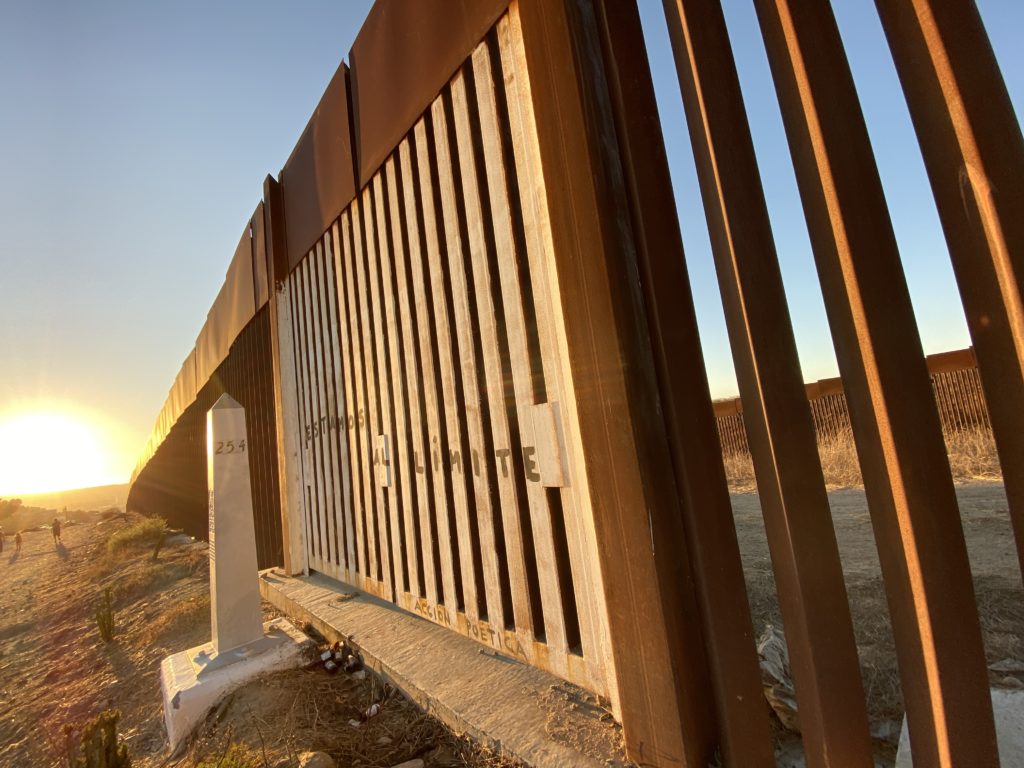
Feike de Jong Undertakes Photojournalistic Walk of the Tijuana/San Diego Border
BORDE(R) – On Foot Along the Edge of San Diego and Tijuana
Feike de Jong is a Mexico City-based journalist, author, artist, and photographer that focuses on urban spaces. He has written for CNN Expansión, Forbes México, the Guardian, and the Atlantic Citylab, among others, and has published photos in the Guardian and Arquine. He has also collaborated with organizations such as the Universidad Nacional Autónoma de México (UNAM), the Rufino Tamayo Museum, the Universidad Autónoma Metropolitana (UAM), York University in Toronto, and Ogino Knauss in Italy. In 2010, Feike won the Walter Reuter prize for journalism for his coverage of climate change in Mexico.
Feike de Jong has begun BORDE(R), a photojournalistic walk of the Tijuana/San Diego border. The project explores Global South-North relations by observing the nexus of these cities’ geopolitical – and cultural – boundaries. Paying close attention to urban planning and design, Feike’s approach is rooted in his belief that city borders deserve more attention because they reveal urban realities that city centers may not.
Feike completed the Tijuana portion of the walk in early November 2020 and will begin the second half in San Diego shortly. BORDE(R) is a continuation of Limits, a project in which he documented a 51-day walk around the edge of the Greater Mexico City Area in 2009.
Feike shares additional details about BORDE(R) below:
BORDE(R) is a project by Mexico City-based journalist, artist, and photographer Feike de Jong to walk around the edges of Tijuana and San Diego, the five million people strong trans-border agglomeration crossing to the US-Mexico frontier, in October and November 2020.
On October 11th, 2020, I will start on a trip on foot first along the edge of Tijuana and then around the edge of San Diego. The route of this project called BORDE(R) should be approximately 400kms long and hopefully will take around 30 days to cover. BORDE(R) is a continuation of the project – www.limits.mx – covering a 51-day walk around the edge of the Greater Mexico City Area in November and December 2009.
By following a route not determined by administrative boundaries, or urban highlights, but rather by the organic growth of the city, by moving slowly and capturing detail, and by taking an open-ended approach to a broad subject matter, this project hopes to engage with a critical part of each city, its edge, as a whole. In the case of BORDE(R), this whole promises to be spectacularly complex and diverse.
The Tijuana-San Diego Borderplex is uniquely positioned to shed light on the relation between the Global North and the Global South, being the largest cross border agglomeration on perhaps the only clear-cut border where a developed country touches a developing country.
This raises simple but significant questions: Are global contradictions between the Global North and Global South also expressed as local contradictions in the relation between Tijuana and San Diego? What would happen to the edges of Tijuana and San Diego if the border did not exist? Are the peripheries of these two cities beginning to become more alike or rather growing apart through the forces of globalization?
From an artistic perspective this project is among other things an attempt to capture fragments of the identity of the United States in the 21st century during a pivotal election and contrast it with the fluid identity of Tijuana.
Thus, BORDE(R) seeks to symbolically merge the two cities, generating an imaginary space in which these are not two cities but one city, in one territory, with a shared destiny.
Though the methodology of walking around the edges of megacities and metropolis may seem impractical, and it certainly does create many difficulties, it also can contribute to the toolkit of urban design and philosophy.
Just as the colonial center of Mexico City reflects the mindset and political economics of the colonial era, I think the edges of cities, which often tend to be the most recent parts, most accurately reflect the mindset and political economics of our time.
Like the Centre Pompidou which wears its tubing and wiring on the outside, the real hardware of cities, the high-tension transmission lines, sub-stations, electricity plants, drainage canals, peripheral highways, water treatment plants, universities, factories, airports and so on, is often more evident on their edges. Thus, the edges of cities are transparent in ways that city centers are not.
The kind of long, slow, unmediated look made possible by walking allows for the imagining of holistic visions. This border exploration will attempt to capture not only the complexity but also the unity of this double frontier, hopefully with detail and humanity.
By capturing both sides of the coin of globalization in one fell swoop, BORDE(R) strives to contribute to our imagination of a 21st century world culture surpassing frontiers and geopolitical economic systems.
BORDE(R) is financed by a grant from the Steunfonds Freelance Journalistiek of The Netherlands and is being done in collaboration with VPRO Radio.




